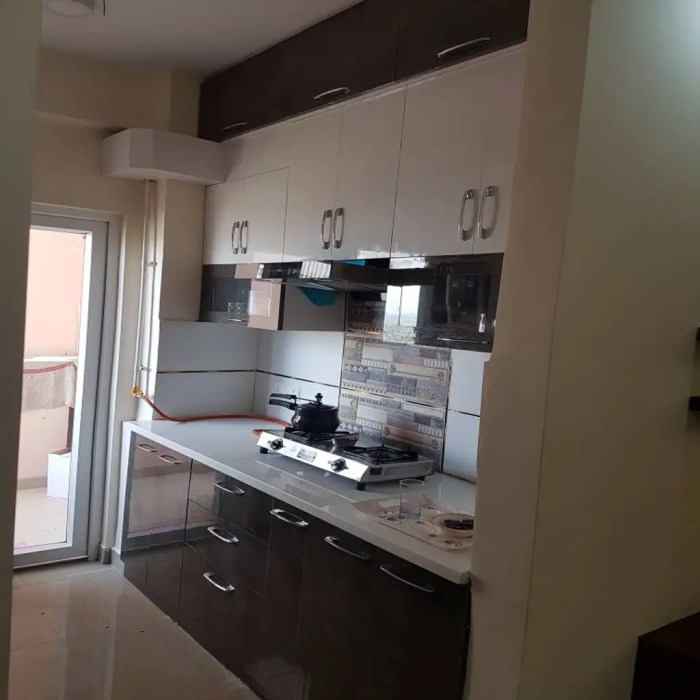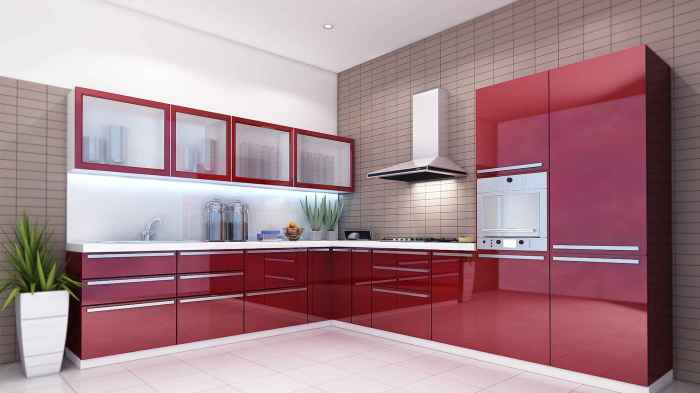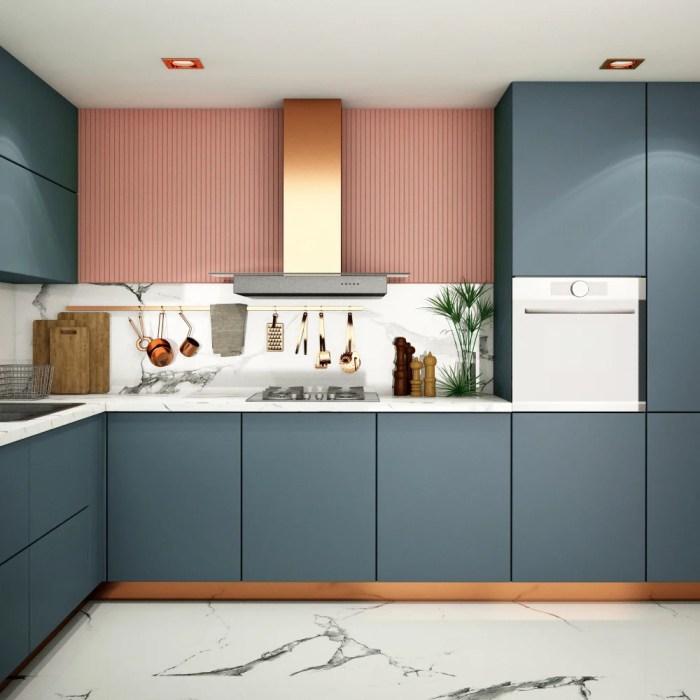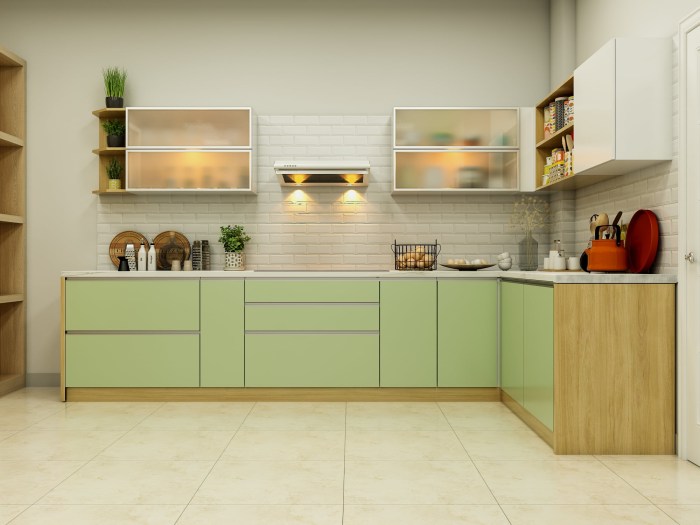Designing a modular kitchen on a tight budget is a balancing act between functionality, aesthetics, and affordability. This comprehensive guide will provide you with the essential knowledge and practical tips to create a stylish and efficient kitchen that fits your budget.
From optimizing space to selecting cost-effective materials, we’ve got you covered.
Kitchen Layout Planning
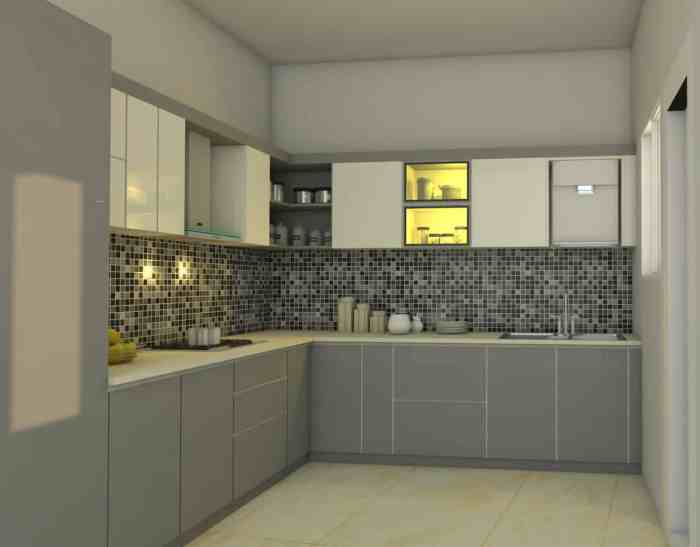
Designing a modular kitchen on a budget requires careful planning to maximize space and functionality. An optimized layout can create a highly efficient and comfortable cooking environment.
To begin, consider the work triangle concept. This principle suggests placing the refrigerator, sink, and stove in a triangular arrangement to minimize movement and maximize efficiency. Additionally, designate specific zones for different tasks, such as a food preparation area, cooking zone, and cleaning station.
Space-Saving Techniques
- Vertical Storage:Utilize vertical space with tall cabinets, pull-out drawers, and shelves to store items vertically, saving floor space.
- Multi-Purpose Islands:Consider incorporating a kitchen island that serves multiple functions, such as a breakfast bar, storage unit, or additional work surface.
- Foldable Appliances:Choose foldable or wall-mounted appliances, such as a collapsible dish rack or a wall-mounted microwave, to save countertop space.
Ergonomic Considerations
Ergonomics is crucial for a comfortable and efficient kitchen. Ensure proper heights for countertops, cabinets, and appliances to minimize strain and discomfort.
- Countertop Height:The ideal countertop height depends on the user’s height. Generally, it should be between 34-36 inches.
- Cabinet Height:Wall cabinets should be placed at a height that allows easy access without reaching or straining.
- Appliance Placement:Place frequently used appliances within easy reach to avoid bending or stretching.
Cabinetry and Storage Solutions
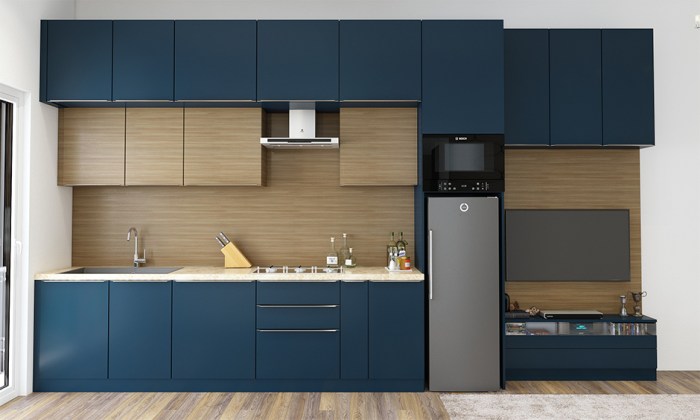
Optimizing storage and functionality is crucial for a modular kitchen on a tight budget. Modular cabinetry systems offer a versatile and cost-effective solution, allowing for customization and flexibility.
Incorporating pull-out drawers, corner units, and vertical storage solutions maximizes space utilization. Pull-out drawers provide easy access to contents, while corner units make use of often-wasted space. Vertical storage solutions, such as wall-mounted shelves or tall pantry cabinets, offer ample storage without taking up floor space.
Durable and Cost-Effective Materials
Choosing durable and cost-effective materials for cabinetry is essential. Laminates, thermofoil, and melamine are budget-friendly options that offer a wide range of colors and finishes. These materials are resistant to scratches, stains, and heat, ensuring longevity and easy maintenance.
Solid wood, while more expensive, provides a classic and timeless look. However, it requires regular maintenance and is susceptible to moisture damage. Consider using solid wood for select accent pieces or cabinet doors, while opting for more affordable materials for the main cabinetry.
Countertop Options and Materials
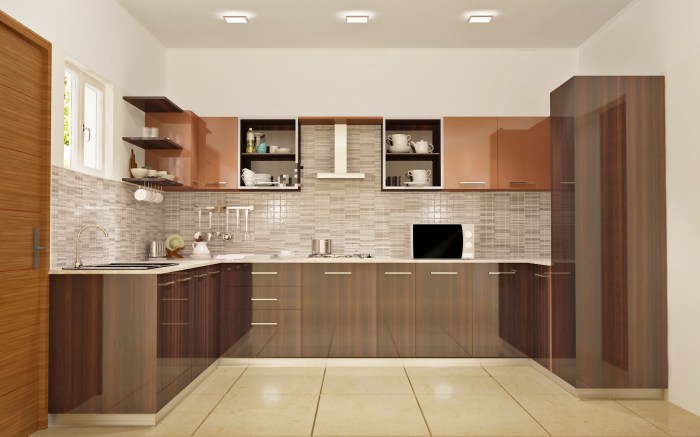
When selecting countertops for your modular kitchen, consider materials that align with your budget and functional requirements. Opt for heat-resistant, stain-resistant, and easy-to-clean surfaces. Laminate, solid surface, and quartz are budget-friendly options that offer durability and a wide range of designs.
Granite and marble are classic choices, but can be more expensive.
Optimizing Countertop Space
Maximize countertop space by incorporating breakfast bars or work islands. These additional surfaces provide extra workspace for food preparation, dining, or storage. Utilize vertical space with hanging shelves or a pot rack to keep frequently used items within easy reach.
Appliance Integration and Functionality
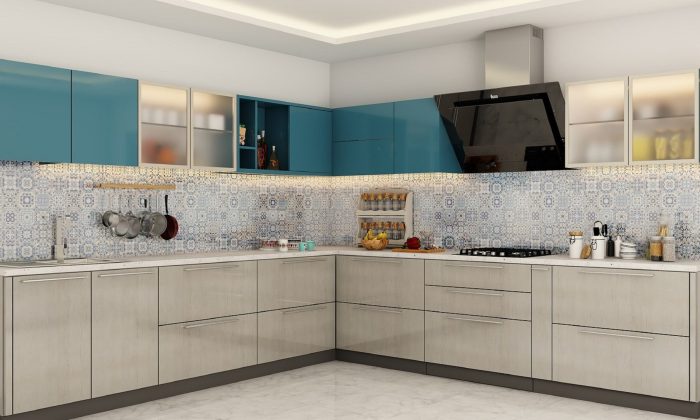
Incorporating appliances into a modular kitchen on a tight budget requires careful planning and strategic choices. By prioritizing energy efficiency and space-saving options, you can create a functional and cost-effective cooking space.
When selecting appliances, consider their energy consumption ratings. Look for Energy Star certified models that meet government standards for energy efficiency, saving you money on utility bills in the long run.
Seamless Appliance Integration
To ensure a cohesive look and maximize space, seamlessly integrate appliances into your modular kitchen design. Opt for built-in appliances, such as ovens, cooktops, and dishwashers, that fit flush with cabinetry, creating a sleek and streamlined appearance.
Space-Saving Appliance Options
Consider space-saving appliances to optimize your kitchen layout. Built-in ovens and cooktops are excellent options, as they eliminate the need for bulky freestanding units, freeing up valuable floor space.
- Under-counter ovens:Positioned below the countertop, these ovens save space while providing ample cooking capacity.
- Cooktops with integrated downdraft ventilation:These cooktops eliminate the need for a separate overhead range hood, saving both space and money.
Lighting and Ventilation
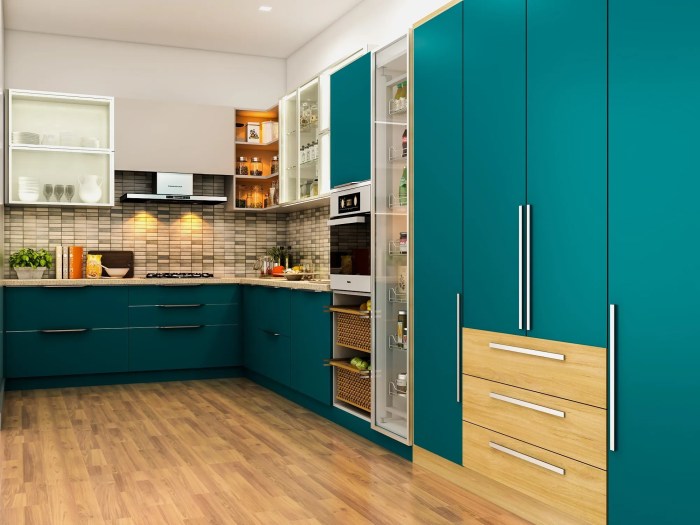
Creating a functional and inviting kitchen on a tight budget requires careful planning, and lighting and ventilation play a crucial role in achieving this. A well-lit kitchen enhances visibility, while proper ventilation ensures a comfortable and odor-free environment.
Lighting, Designing a Modular Kitchen on a Tight Budget
Design a lighting plan that incorporates both natural and artificial sources. Natural light is the most cost-effective and sustainable option, so maximize its use by placing windows strategically and using light-colored curtains or blinds.
- For artificial lighting, choose cost-effective fixtures such as LED bulbs or recessed lights. These provide ample illumination while consuming less energy.
- Install a combination of ambient, task, and accent lighting to create a layered effect. Ambient lighting provides general illumination, while task lighting focuses on specific work areas like the sink or stovetop. Accent lighting highlights architectural features or decorative elements.
- Consider using dimmers to adjust the lighting intensity based on the time of day or activity.
Ventilation
Proper ventilation is essential to maintain good air quality and prevent odors from cooking. Install an exhaust fan over the stovetop to remove smoke and fumes. Consider a range hood if you frequently cook with high heat or oil.
- Choose a fan with a CFM (cubic feet per minute) rating that is appropriate for the size of your kitchen. A higher CFM rating indicates greater air removal capacity.
- If natural ventilation is limited, install a ceiling fan or open windows to circulate air.
- Regularly clean the exhaust fan filter to maintain its efficiency.
Conclusion: Designing A Modular Kitchen On A Tight Budget
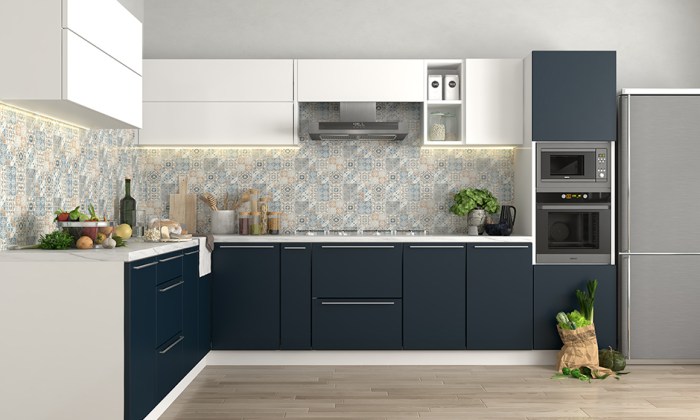
Designing a modular kitchen on a budget requires careful planning, creative thinking, and a keen eye for detail. By following the principles Artikeld in this guide, you can create a functional and beautiful kitchen that meets your needs and enhances your home’s value.
Questions Often Asked
What are the key considerations for designing a modular kitchen on a budget?
Space optimization, flexible storage solutions, durable and cost-effective materials, energy-efficient appliances, and proper lighting and ventilation.
How can I maximize space in a compact modular kitchen?
Use pull-out drawers, corner units, vertical storage solutions, and consider a breakfast bar or work island to extend functionality.
What are some budget-friendly countertop materials?
Laminate, quartz, and solid surface materials offer a wide range of options with varying price points.
How can I incorporate energy-efficient appliances into my modular kitchen design?
Look for appliances with Energy Star ratings, consider built-in ovens and cooktops, and opt for induction or gas cooktops for efficiency.
